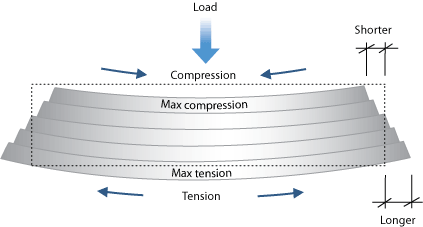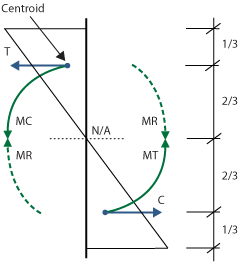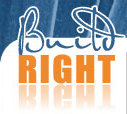Internal moment of resistance
When a beam bends under load, the horizontal fibres will change in length. The top fibres will become shorter and the bottom fibres will become longer. The most extreme top fibre will be under the greatest amount of compression while the most extreme bottom fibre will be under the greatest amount of tension.

An engineer determines the centroids of the triangular shapes of the stress diagram. This provides the value of the total compressive and tensile forces acting in the beam. These centroids are a proportional distance apart which is referred to as the moment arm.
The moment arm provides the value for moments that the beam must resist if it is to remain structurally sound. In technical terms it is referred to as the internal moment of resistance.

The tensile and compressive stresses result in a turning effect about the neutral axis. These are called moment MT and MC respectively. The chosen beam must be able to resist these moments with MR (internal moment of resistance) if it is to remain in equilibrium.
